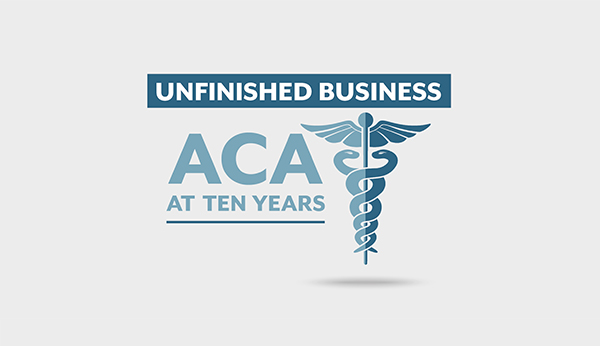
ACA at 10 Years: Government Costs
The vast majority — 92 percent — of spending on ACA-related health coverage comes from the federal government, and most of those funds are dedicated to people enrolled in coverage through Medicaid expansion. The federal government covered 100 percent of these costs through 2016 but has since decreased its share. This fiscal year (FY2019-20), over $1.2 billion is budgeted to cover Medicaid expansion in Colorado, with the federal government now paying 90 percent.
Federal funds also cover 50 percent of the cost of other Medicaid enrollees, including nearly $50 million in FY2019-20 for “welcome mat” enrollees — those who were previously eligible for Medicaid but didn’t enroll in the program until expansion took effect in 2014.
The federal government also pays the entire cost of Advance Premium Tax Credits (APTCs), which help people with incomes between 138 and 400 percent of the federal poverty level afford coverage on the individual market. The 115,000 Coloradans who received APTCs in 2019 received just under $750 million in premium assistance, around $6,500 per person per year, a figure that has been increasing over time.
Colorado’s spending on most ACA programs, including Medicaid expansion, is not covered by Colorado taxpayers, but by the Hospital Provider Fee established in 2009 through House Bill 09-1293. Hospitals in Colorado pay a fee to the state, which results in a dollar-for-dollar federal match. Together, these funds cover charity care hospitals provide the uninsured or indigent, higher reimbursements paid to hospitals for seeing patients covered by Medicaid, and Colorado’s 10 percent share of Medicaid expansion costs, which totaled just under $130 million this fiscal year.
The state’s general fund, meanwhile, covers Colorado’s 50 percent share of costs for the people who gained Medicaid coverage as part of the “welcome mat” phenomenon. This amount varies depending on Medicaid enrollment; it came to over $48 million in the current fiscal year (FY2019-20).
But tensions are brewing between the federal government and states when it comes to paying ACA expenses. In November 2019, the Centers for Medicare and Medicaid Services (CMS) proposed the Medicaid Fiscal Accountability Regulation, which includes new reporting requirements for states, alters rules around financing mechanisms, and makes other changes that could reduce the amount of federal funds available for Medicaid and other safety net programs. The Colorado Hospital Association says the proposed rule would put $3 billion in Medicaid payments from Colorado’s provider fee at risk each year. While its potential impacts are unclear, this reduction in funding could interrupt care and coverage for those enrolled in traditional Medicaid and those who enrolled as a result of Medicaid expansion in Colorado.
CHI wraps up its focus on changes to costs since the ACA next week. The next chapter will explore how costs have changed for health systems and other health care providers.


